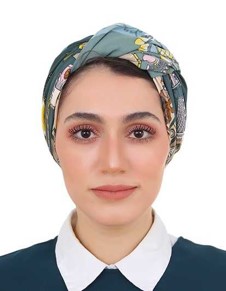The role of intracellular heterogeneity in breast cancer, lung cancer, and COVID-19 pathogenesis: strategies for early disease detection and management
Dr. Sarah Musa Subhi Hammoudeh
The multi-level heterogeneity of the human body can be advantageous for the organism to adapt to a changing environment; however, it can be detrimental in disease as it contributes to drug resistance and additional complexities in the disease model. Therefore, interrogating the contribution of heterogeneity in pathogenesis is critical to comprehensively understand and target diseases. The work in this thesis was focused on developing and utilizing an immunohistochemistry-targeted RNA sequencing approach to interrogate the spatio-temporally heterogeneous cellular populations contributing to the pathogenesis of hormone positive breast cancer, drug-resistant non-small cell lung cancer, and severe COVID-19. Analysis of progesterone receptor expression in hormone receptor breast cancer cells from the same genetic background revealed a significant intratumoral heterogeneity; where PR upregulation correlated with inflammatory and immunomodulatory pathways such as NF-kB (via the association with molecules in the CBM complex) and type I interferon signaling. On the other hand, PR suppression correlated with the activation of compensatory oncogenic signaling pathways such as GPCRs, EGFR, MAPK, RHO, ESR and HIF-1 signaling pathways. Analysis of non-small cell lung cancer response to treatment with fendiline, a potential indirect KRAS inhibitor, revealed the activation of unfolded protein response, autophagy, lysosomal formation and apoptotic pathways and the downregulation of MAPK, RHO, WNT and NOTCH signaling as well as cell cycle and cell division. Combining fendiline with targeted treatments yielded heterogeneous sensitizing effects on cancer cells. Moreover, resistance pathways-related transcripts, such as GPNMB, were heterogeneously deregulated across genetically identical cells in response to treatment. Finally, analysis of pan-organ response to SARS-CoV-2 infection in severe COVID-19 patients revealed intra-organ heterogeneity with unique biomarkers for each organ (e.g. DCLRE1C and CHI3L1 in lung; APOA4 and NFASC in liver; LILRA5 and ISG20 in kidney; and ASS1 and PTPN1 in heart). Moreover, analysis of PBMCs isolation from severe COVID-19 patients revealed a notable intracellular heterogeneity in the vulnerability of PBMCs to SARS-CoV-2 infection. Taken together, the findings of this study confirm the reflection of intracellular heterogeneity in the diverse genetic patterns as well as the diverse cellular response to external stimuli in various disease models. Understanding the disease model at the single cell can provide better ways to improve the model leading to better understanding of the complex molecular mechanisms involved in various chronic complex diseases.

Principal Investigators
Lübeck:
Prof. Hauke Busch
Sharjah:
Prof Rifat Hamoudi
Prof. Qutayba Hamid
Dr. Mohamed Rahmani


